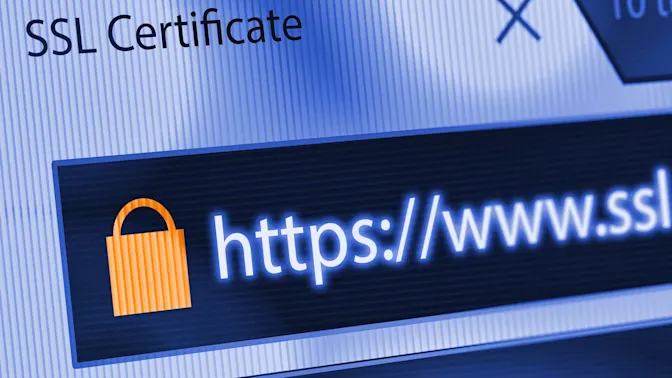
Holiday Shopping? Spot Fake Online Stores With These 9 Tips!
Holiday deals can feel irresistible — but scammers know it too. This season, don't let a "steal" of a deal steal your money or your peace of mind. Here are nine tips to stay savvy and spot the fake online stores before they snag you.
1. Deals Too Good to Be True? They Probably Are
If a site advertises luxury items at jaw-dropping prices, think twice. Scammers often lure you in with those tempting, crazy-low prices to make a quick buck.
How to Protect Yourself: Cross-check prices on trusted sites. If a deal looks like an absolute dream compared to other retailers, it's probably a mirage.

2. Check the URL
Fraudsters love to disguise fake sites with URLs that seem almost legitimate — sometimes one letter off or with an extra word like secure-amazon.com. These minor details can fool even the most vigilant shoppers.
How to Protect Yourself: Type in the official URL yourself instead of clicking links. Even better, bookmark your favorite stores to avoid any surprises.
3. Watch for Secure Payment Options
A legit store won't push for wire transfers, prepaid gift cards, or crypto payments. These methods give scammers a no-trail advantage if they run off with your money.
How to Protect Yourself: Stick with payment options that offer fraud protection, like credit cards or PayPal®. If a site insists on untraceable payment methods, shop somewhere else.
4. Design Speaks Volumes
Professional retailers invest in sleek, polished websites. Scam sites? Not so much. Poor design, pixelated images, and weird grammar can all hint at a shady operation.
How to Protect Yourself: Explore the site a bit. If the design feels clunky or content sounds like a bad translation, you're likely better off skipping it.

5. Peek at Reviews — But Not Just on Their Site
Scammers fill their sites with fake five-star reviews that are often vague and overly positive. You'll rarely find complaints on their home turf.
How to Protect Yourself: Search for reviews on independent sites like Trustpilot®. If you don't find any, or if reviews sound suspiciously alike, take it as a red flag.
6. Verify Contact Details
Real businesses provide contact info — think customer service numbers, physical addresses, and responsive emails. Scammers? They prefer you stay out of touch.
How to Protect Yourself: Check for a customer service number and give it a call. If you find only a contact form or a dud number, walk away.
7. Look for HTTPS and the Lock Icon
Before entering payment info, make sure the website uses HTTPS and has a padlock icon in the browser bar. These indicators mean the site has at least basic security.
How to Protect Yourself: Avoid sites that lack HTTPS and the lock icon. While not foolproof, these features add a layer of security against prying eyes.

8. Watch for Phishing Tricks
Phishing emails often come from email addresses that look close to legit but aren't. These scammers usually push you to click a link "before the deal expires."
How to Protect Yourself: Hover over email links to see where they actually go. If the link looks off or doesn't match the retailer's site, delete the email.
9. Keep Tabs on Your Bank Statements
Holiday scams can slip through unnoticed if you don't check your accounts. Fraudsters know that many holiday shoppers don't review their statements right away.
How to Protect Yourself: Set up alerts for unusual activity and review your statements regularly. Report suspicious transactions to your bank ASAP.

Stay Savvy, Shop Smart, and Celebrate Safe
Fake online stores may lurk in holiday deals, but a sharp eye and a cautious approach will help you avoid them. When shopping, trust your instincts and double-check anything that feels off. This season, keep the holidays merry — and the scammers out of your wallet!
References: Tips to Avoid Holiday Shopping Scams | Holiday scams aren't so easy to spot anymore. How online shoppers can avoid swindlers. | Online Holiday Shopping Scams | 10 Tips for Safer Online Shopping This Holiday Season























